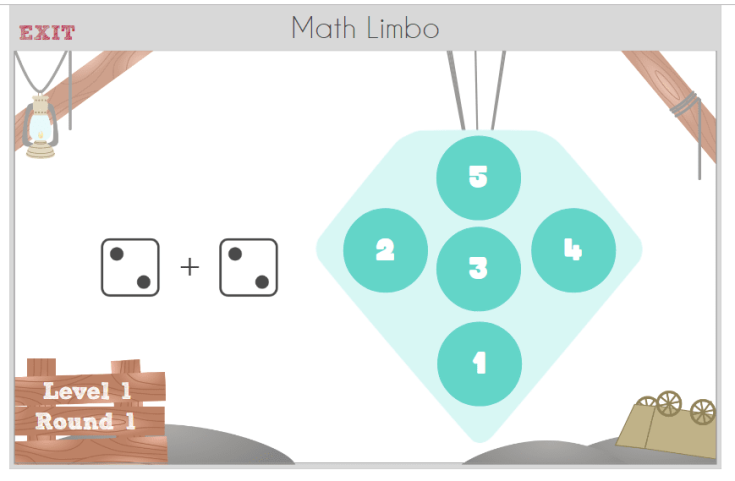Now that both my children are school-aged, I am challenged to find mathy moments that will support their “school math” while also being interesting, engaging, and creative. I want to help them with the curriculum they are learning at school, AND I want them to enjoy playing with math. As they get older, I can see how it gets more difficult to stay true to that second goal.
This hit home at the end of last school year when the 6-year-old returned from his last day with a math workbook and instructions from his teacher to strengthen his addition and subtraction facts. Ugh. I opened that workbook, and, well, all I could think was B O R I N G. (If you’ve been reading previous posts, you know by now that I am biased against most math workbooks. If your kids enjoy them, fine. If they don’t, why force it when there are other engaging options?) I must insert a note here: my son’s teacher is terrific. And the public Montessori school where he learns math concepts through the manipulation of concrete items in self-guided activities is great. But…during the summer I wanted to find a way to drill his addition and subtraction facts into him without…well….without drilling his addition and subtraction facts into him.
Luckily for me, my other son’s teacher introduced me to GregTangMath.com. There are a variety of games to choose from on Tang’s site, and I have only explored a couple of them thus far. Right now, the 6-year-old is playing Math Limbo to strengthen his addition and subtraction facts. Of course, he’s only partially aware of that. Mostly he’s focused on solving the puzzle before the diamond falls. I love this game because it’s not a list of addition and subtraction facts to solve, yet he still gets a lot of repetitive practice with those facts. It’s doesn’t look like a math workbook that has simply been transferred online. It is a puzzle game that could not exist on paper and it challenges him to strengthen his understanding of numerical relationships while thinking strategically and flexibly. It is a game that is accessible and then builds in complexity and challenge. We both easily figured out the first level of play, and then we both were quickly challenged at the higher levels.
Whoa. Seriously. It’s true. Try it yourself. You might enjoy it.

This game is not going to be the sole thing that saves the day. I still need to help the kid with strategies sometimes. I sit next to him and observe his play. I watch him figure out eventually that he can click on the “4” in the above puzzle OR the “3” and “1.” At some point he ought to realize that it’s more valuable for him to click 2 digits at a time, if he can. I try not to point out those particular game strategies, because I’m curious to see if he notices them himself. When the game gets more complex and includes numbers higher than 10, he freezes and says he doesn’t want to play anymore. I step in and play that puzzle for him, narrating my thought process, if he’ll tolerate it. Then we take a break. When we come back to the game another day, I preview a couple strategies for him to deal with the larger numbers. He seems excited to play the game, and a lot more willing to deal with it over the workbook.
Mathematically…the online games in GregTangMath.com use technology to make a better math practice than simply solving straightforward operation problems over and over again online. Even the game Prodigy, which elementary math teachers seem to love (I don’t) misses the opportunity to use technology to create a learning experience that’s more robust than a worksheet. This is the first math practice site I’ve come across that I think is truly worthwhile. Do you know of others? Please share in the comments below!
Photo credit: Tortured Mind on VisualHunt.com / CC BY-NC-SA


I wish I had a math teacher like you. Thanks for doing this blog and inspiring the next generation.
LikeLike
Thank you, Ashish. It’s nice to read your kind words.
LikeLike
Is mathematical spontaneity created out of plan or emerges from habit?
LikeLike